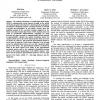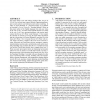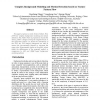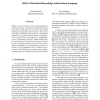1923 search results - page 32 / 385 » Modeling Complexity in Secure Distributed Computing |
ICC
2007
IEEE
14 years 2 months ago
2007
IEEE
—The realistic performance of a multi-input multi-output (MIMO) communication system depends strongly on the spatial correlation properties introduced by clustering in the propag...
NSPW
2006
ACM
14 years 2 months ago
2006
ACM
This paper details a true and striking paradigm shift: the use of E-Prime for (at least) user-centered security, organizational/enterprise security policies and informal security ...
ICPR
2008
IEEE
14 years 2 months ago
2008
IEEE
This paper proposes a novel Texture Pattern Flow (TPF) for complex background modeling and motion detection. The Pattern Flow is proposed to encode the binary pattern changes amon...
ACSAC
2003
IEEE
14 years 1 months ago
2003
IEEE
As computer infrastructures become more complex, security models must provide means to handle more flexible and dynamic requirements. In the Organization Based Access Control (Or...
CSFW
2008
IEEE
14 years 3 months ago
2008
IEEE
DKAL is a new declarative authorization language for distributed systems. It is based on existential fixed-point logic and is considerably more expressive than existing authoriza...




